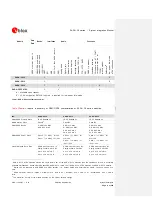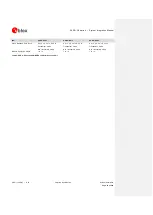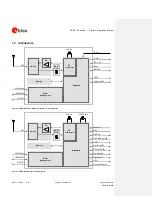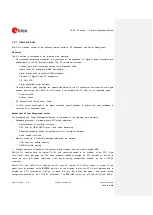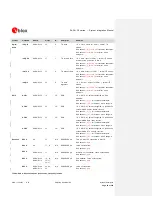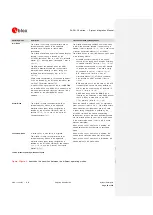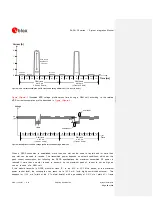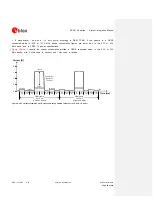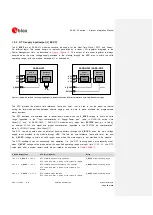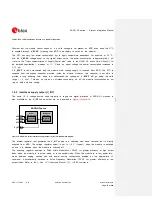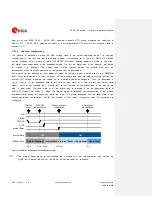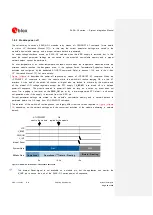
SARA-G3 series - System Integration Manual
UBX-13000995 - R06
Objective Specification
System description
Page 25 of 218
Operating Mode
Description
Transition between operating modes
Idle-Mode
The module is not ready to communicate with an
external device by means of the application
interfaces since configured to reduce power
consumption.
The module automatically enters idle-mode whenever
possible if power saving is enabled by the
AT+UPSV command (refer to
u-blox AT Commands
Manual
[2]), reducing power consumption (refer to
1.5.1.3).
The
CTS
output line indicates when the UART
interface is disabled/enabled due to the module
idle/active-mode according to power saving and
hardware flow control settings (refer to 1.9.1.3,
1.9.1.4).
Power saving configuration is not enabled by default:
it can be enabled by the AT+UPSV command (see
u-blox AT Commands Manual
A proper 32 kHz signal must be fed to the
EXT32K
pin of SARA-G300 and SARA-G310 modules to let
idle-mode that otherwise cannot be reached (this is
not needed for the other SARA-G3 series
modules).
The module automatically switches from active-mode
to idle-mode whenever possible if power saving is
enabled (refer to sections 1.5.1.3, 1.9.1.4 and to the
u-blox AT Commands Manual
[2], AT+UPSV).
The module wakes up from idle-mode to active-mode
in the following events:
Automatic periodic monitoring of the paging
channel for the paging block reception according
to network conditions (refer to 1.5.1.3, 1.9.1.4)
Automatic periodic enable of the UART interface
to receive and send data, if the power saving
AT command is set to 1 (refer to 1.9.1.4)
RTC alarm occurs (refer to
u-blox AT
[2], AT+CALA command)
Data received on UART interface (refer to
1.9.1.4)
RTS
input line set to the ON state by the DTE
if hardware flow control has been disabled by
AT&K3 and the power saving AT command is
set to 2 (refer to 1.9.1.4)
GNSS data ready: when the
GPIO3
pin is
informed by the connected u-blox GNSS receiver
that it is ready to send data via the DDC
(I
2
C) interface (refer to 1.11, 1.9.3)
Active-Mode
The module is ready to communicate with an
external device by means of the application
interfaces unless power saving configuration is
enabled by the AT+UPSV command (refer to
sections 1.5.1.3, 1.9.1.4 and to the
u-blox AT
Commands Manual
When the module is switched on by an appropriate
power-on event (refer to 2.2.1), the module enters
active-mode from not-powered or power-off mode.
If power saving configuration is enabled by the
AT+UPSV command, the module automatically
switches from active to idle-mode whenever possible
and the module wakes up from idle to active-mode
in the events listed above (refer to idle to active
transition description).
When a voice call or a data call is initiated, the
module switches from active-mode to connected-
mode.
Connected-Mode
A voice call or a data call is in progress.
The module is ready to communicate with an
external device by means of the application
interfaces unless power saving configuration is
enabled by the AT+UPSV command (see sections
1.5.1.3, 1.9.1.4 and the
u-blox AT Commands
Manual
When a voice call or a data call is initiated, the
module enters connected-mode from active-mode.
When a voice call or a data call is terminated, the
module returns to the active-mode.
Table 5: Module operating modes description
describes the transition between the different operating modes.

